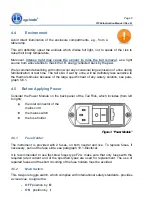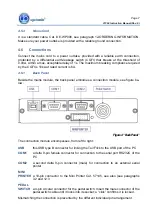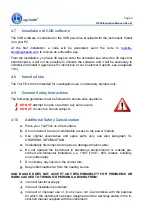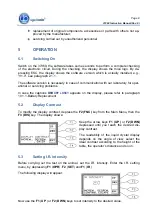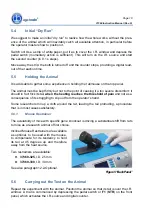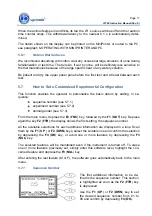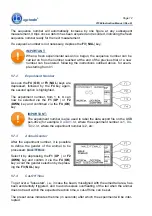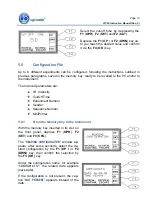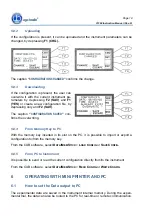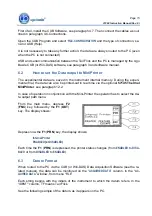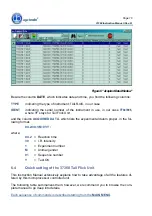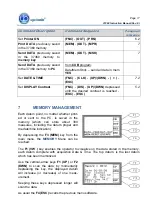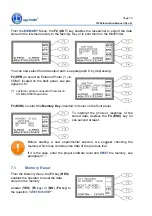
Page 20
37360 Instruction Manual (Rev. 0)
8
REPRODUCIBILITY OF THE TEST
Any repetitive test, in particular if carried out on experimental animals, challenges the ex-
perimenter with a number of variables she/he tries to minimize, to obtain results as con-
sistent as possible.
In our case, it is evident that:
1)
the positioning of the I.R. window in relation to the aimed stimulation area
2)
the I.R. intensity
are the parameters which should be closely monitored by the researcher.
On what concerns the situs positioning, a minimum of experience will lead to a satisfacto-
ry standard.
Being the optics lodged in a rigid structure, the bulb voltage accurately controlled and the
I.R. output
factory calibrated by a Radiometer
(see paragraph 9-CALIBRATION), the
I.R. intensity is remarkably constant (±1%).
9 CALIBRATION
The
calibration
consists of the measure-
ment of the I.R.
output
power of the Tail
Flick with an I.R. Radiometer
1
, which in turn
has been calibrated with a standard I.R.
source.
To enter the calibration menu, depress
F1
(
OPR
), followed by the
F3 (CAL)
key.
9.1 Radiometer
The Radiometer enables us to deliver, and the user to maintain, the I.R. source of each
Tail Flick Unit with identical power flux output (mW per square cm).
There is no way to calibrate the Tail Flick Unit (as any other I.R. emitting device) without
a Radiometer; the researcher should consider this extremely useful accessory, the op-
tional I.R. Radiometer Cat.
37300
, a battery operated self-sufficient instrument, complete
with I.R. probe, digital meter and adaptors for the Tail Flick (and Plantar Test), all parts
neatly lodged in a sturdy plastic case.
Ask for details and manual of the 37300 Radiometer!
1
RADIOMETER = a high precision I.R. Flow Meter

